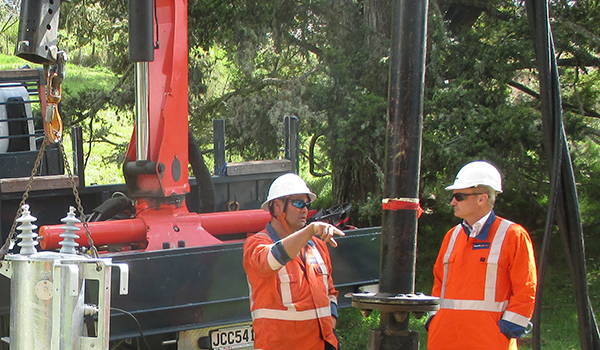Northpower’s Critical Risk programme has won the Engagement category at this year’s NZ Workplace Health & Safety Awards. In 2019 and 2020 the company experienced 16 high-potential events, seven of which involved live electricity. Each one of them had the potential to result in serious harm or death. The company had already done work to identify critical risks, but an analysis of these events showed the controls weren’t always being applied.
It’s a long term project. We identify the critical controls but we pick up gaps in performance we aren’t comfortable with. And your level of comfort changes over time
Ross Wilson, Northpower’s Group Manager for Health, Safety and Environment, says the traditional reaction would have been more education and training, but this was rejected as unsatisfactory. Instead, the company worked with consultancy HSE Global to identify a draft critical risks/critical controls framework, then significantly amended it to suit Northpower’s own specific needs. It also acknowledged its traditional top-down approach to identifying risks and controls was no longer fit for purpose. It was time to acknowledge workers as experts and to bring them fully into the mix to help develop a new way. The Critical Risk Control programme was derived from this as a deliberately designed strategy to engage front line workers in the process. Staff belonging to the company’s national safety forum and those belonging to the multiple local safety forums around the country helped define the top ten critical risks to become part of the programme. They also became champions for change, as volunteers were sought to be filmed sharing their stories of being involved in a live electricity incident at Northpower or with a previous employer – as the injured party or as a witness, or a family member affected afterwards. As Ross says:
We were looking for maybe five or six short videos of Northpower people but we almost couldn’t turn them off: what it meant to them, being in a team and observing an incident. We ended up with about 20 videos.
Some of the videos were screened at a company-wide Stop for Safety day involving all 1200 staff around the country. Workers who had been involved in creating the Top Ten list spoke about their involvement in the project and what they had learned so far about critical risks and controls.
We could see the lights come on. This isn’t one of the senior managers telling us we have to do something. These are our workmates telling us, this is important.
Staff belonging to the company’s national safety forum and those belonging to the multiple local safety forums around the country helped define the top ten critical risks to become part of the programme. They also became champions for change, as volunteers were sought to be filmed sharing their stories of being involved in a live electricity incident at Northpower or with a previous employer – as the injured party or as a witness, or a family member affected afterwards.
When addressing the risks of live electricity, Wilson says what surprised many of the expert workers was that they were already using critical controls
but didn’t know them in that context: as controls which have to be in place every single time. The working group looked at best practice guides, codes of practice and other established knowledge sources, then added their own hard-won expertise to the mix to come up with a set of Northpower critical controls for the critical risk of working with live electricity.
They need to know their part in the process and why it is important, like making sure a piece of equipment gets into the field on time.
A number of key changes and improvements have come out of the process which is being progressively applied to other risk areas. The success of the programme, Wilson says, is due to the high involvement of staff as subject matter experts. It takes longer but the extra time is certainly worth it.
A detailed description of the risk areas and methods used is available in the Safeguard magazine article.

Luke Beeston is the Director of Risk and Innovation for HSE Global Australia and is responsible for HSE Global’s global risk management and governance programmes, including critical risk and control management and client solutions in the digital space.

